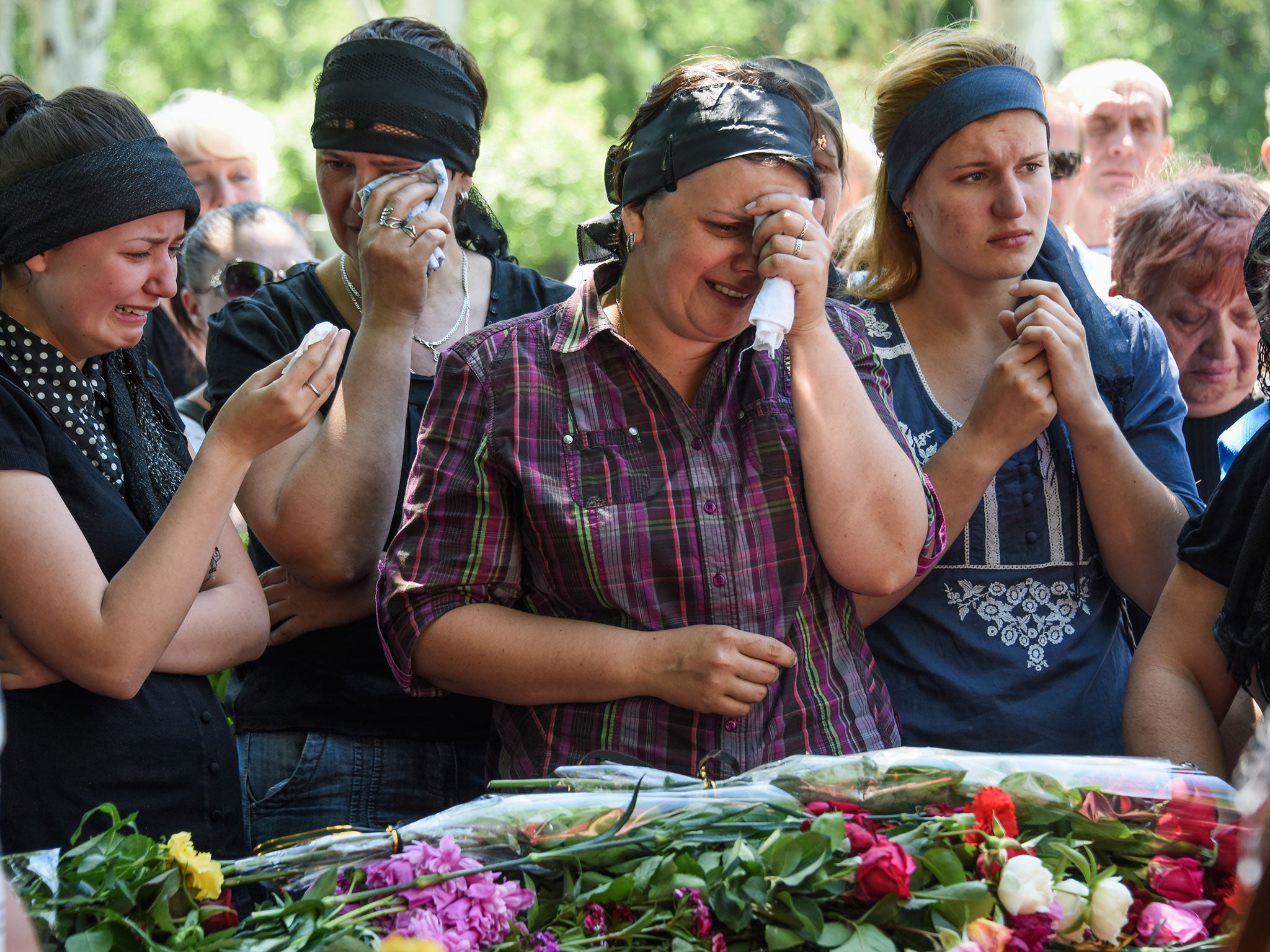Ukraine crisis: Outbreak of violence in Maryinka threatens to end ceasefire
Government forces and rebels exchange fire as fierce fighting rocks city suburbs

Ukrainian soldiers, fresh from a declared victory, had little time to chat as they continued their “mopping-up” operation in Maryinka last week.
Visibly nervous, their blackened faces barely registered above the newly constructed sandbag huts as they dispatched The Independent back along the main prospect, past the empty munition shells, artillery craters, the fallen trees and two Ukrainian tanks.
Wednesday’s battle, which was focused on Maryinka and two other Donetsk suburbs, was the most serious violence seen in the region for some time. The mass use of heavy artillery and multiple rocket systems in the fighting is the most-blatant indication of the death of February’s Minsk ceasefire, which required both sides to withdraw heavy weapons from the front line.
Each blamed the other for the outbreak of fighting last week, but by Thursday evening a reasonably clear picture of what happened had emerged.
Just after 4am on Wednesday, Russian-backed forces launched an offensive on Ukrainian lines, forcing them to abandon their final checkpoint position. By the evening, the Ukrainians had regained operational control of the town and that checkpoint.
Both sides also claimed significant losses had been caused to the enemy. The rebels claimed the death of 400 Ukrainian troops, and said 14 of their own were killed and a further 30-40 seriously injured. Meanwhile, Andriy Lysenko, an official spokesman for the Ukrainian side, said government military losses were just five, compared to 80 enemy deaths.
The Independent was not in a position to verify rebel losses. However, Valery Kolesnikov, a volunteer working in close contact with government forces in Maryinka, estimated 14 Ukrainian military and two civilian deaths, with 36 seriously injured.
UN political chief Jeffrey Feltman, on Friday said that 28 people, including nine civilians, were killed in the clashes. He urged both sides to respect the ceasefire.
“We are either looking at a return to a deepening, intractable conflict or a momentary upsurge in parts of the conflict zone,” Mr Feltman said. “We cannot afford either.”
The few hundred civilians who had stayed behind in Maryinka spoke of their distress at Wednesday’s fighting, which, they said, had been the worst they had experienced in the last 12 months.
While a ceasefire of sorts was implemented by about 5pm local time, the terror did not end. One man, Yuri, who refused to give his surname, described humiliating and frightening treatment at the hands of Ukrainian soldiers the following morning.
“They forced me to the floor, and made me undress to my underpants,” he said.
His neighbour, Elena Vlasova, 45, warns visitors who enter her house: “Don’t take your shoes off, there’s glass everywhere.”
Her living room is covered in mortar shrapnel, wood and glass. Her dog died in the attack, and she believes only the thickness of one wall saved her from injury. Visibly shaken, Ms Vlasova says it was the second time that fighting had come to her home.
“I had to abandon another flat last June”, she says.
The consequences of that 12 June battle, when Ukraine re-established control of Mayrinka, live on to this day. Locals have been without gas in the year since then, and while Ukrainian authorities blame rebel authorities for getting in the way of repairs, not all are convinced by this explanation. “Where there is a will, there is a way,” says Ms Vlasova.
Maryinka’s residents complain about being left to their fate by a government that claims to represent them, abandoned in a buffer zone which is of interest to neither side. They say local authorities rarely visit, and point to the three shops that remain open in the town. None are well stocked, and the prices of some goods has become prohibitive, as bureaucratic restrictions at the official Ukrainian border and customs points on the front line lead traders to up prices.
Many of those who have stayed in Mayrinka are locked in a vicious circle: too poor to leave, and too poor to stay.
“We are at our wits end and I can’t sit through another winter without gas,” says pensioner Liudmila Petrovna, 71.
She hopes the appearance of a Western journalist might change things.
“Can you get the message through?” she pleads.
Those who wanted to leave were being offered transport and temporary accommodation. Yet still some remained committed to staying despite the obvious danger.
With a smile that revealed her row of gold teeth, retired Ukrainian-language teacher Lidia Ivanova, 75, was defiant: “Why should I be forced to from my home? I’m not leaving because someone somewhere couldn’t agree on a split of power and money.”
Join our commenting forum
Join thought-provoking conversations, follow other Independent readers and see their replies
Comments